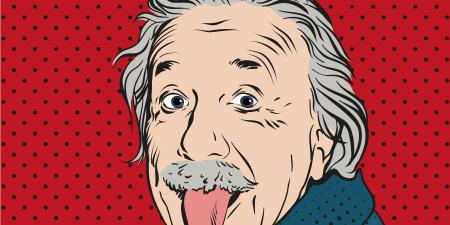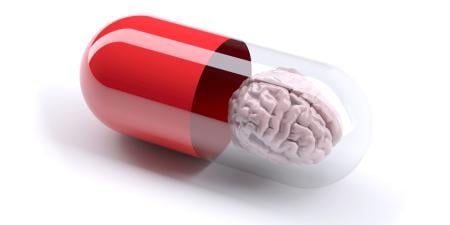The human brain, as philosophers will attest, has a metaphysical claim to fame: it is the only object in the universe that ponders itself. Such cosmic uniqueness should come as no surprise, given the brain’s unrivaled complexity. Containing some 100 billion neurons and 100 trillion synapses, it is saddled with the Sisyphean job of running the body—releasing hormones on cue, moving limbs on request, breathing ad infinitum—like the stage manager of an endless neurochemical Cirque du Soleil show. As if that weren’t enough, the brain also faces the inscrutable mission of generating the mind, which requires merging the input from our senses with the din of our thoughts and the fog of our memories to produce the wispy, quasidivine realm known as consciousness. And so this gifted, self-aware brain of ours, as Emily Dickinson wrote, is not just wider than the sky. It is also deeper than the sea.
The human brain is also the only machine in the universe capable of fixing itself, thanks to the science of neurology. By this, of course, I mean that a neurologist can use his or her brain to help itself or those of other people. Neurologists have been treating patients with measurable success since the early nineteenth century, when French physician Jean-Martin Charcot established a neurology clinic at the renowned Salpetriere hospital in Paris. Charcot was the first to describe multiple sclerosis and to explore the pathophysiology of conditions like epilepsy, neurosyphilis, and stroke, and many medical historians consider him to be the founder of modern neurology.
If Charcot’s neurology was modern, then the field in which neurology residents find themselves today is decidedly postmodern. New genetic discoveries and neuroimaging modalities are fueling exponential growth in the knowledge physicians are expected to retain. New drugs are bringing hope to patients with previously untreatable diseases such as Alzheimer.
With the advancing frontier come new ethical challenges for neurologists. Many of these challenges come to light in this month’s issue of Virtual Mentor, titled “Gray Matters: Neuroethics in the Twenty-First Century.”
What should a physician do, for example, when a patient requests a neuroenhancement pharmaceutical—a “smart pill”—for a non-medical reason? In this month’s second clinical case, Dan Larriviere, MD, JD, a neurologist at the University of Virginia, explains the circumstances under which such a prescription can be justified; in the medicine and society column, neuroethicist Peter Reiner, MD, PhD, considers the impact of neuroenhancers on the physician’s practice as new drugs enter the market and consumers (literally) get wise.
Conversely, some people who do have—or whose children have—bona fide neurological diseases view their conditions merely as normal variations in human function. So when parents of a boy with autism tell a doctor they do not want medical care for his condition, is that tantamount to child abuse? Johns Hopkins University neurologist Margaret Moon, MD, advises the pediatrician who disagrees with well-meaning parents in the first clinical case.
The challenges of communicating and collaborating with parents are even more pronounced when treatment of a very young child may be futile. In this month’s journal discussion, Jay Desai, MD, a resident in child neurology at Childrens Hospital Los Angeles, critiques a recent paper on end-of-life decision making and intensive care for newborns with severe neurological insult.
Neurologists also bear the burden of deciding exactly when the adult brain—and thus the patient—is dead. The current criteria vary considerably from one institution to the next. Henry Ford Hospital neurologists James Bartscher, MD, and Panayiotis Varelas, MD, PhD, detail the history of brain death determination and urge the establishment of a certification process for physicians charged with making the determination and the adoption of a national standard for the procedure.
Also in the legal arena, brain imaging is being advocated as a way to test the reliability of witness testimony in court. University of Pennsylvania Law School student Benjamin Bumann considers the promises and challenges of inferring subjects’ mental states from their brain activity and whether such inferences are admissible in judicial proceedings.
On the flip side of the question of truthfulness, is it acceptable to deceive a patient’s mind in an effort to treat his or her brain? In the issue’s third clinical case, Dartmouth University neurologist and bioethicist James Bernat, MD, casts a critical eye on the use of a dramatic—and utterly bogus—diagnostic procedure designed to induce a psychiatric patient to have a nonepileptic seizure.
In the case of many other neurological problems, effective detection eschews technology in favor of plain old observation. With the publication of the much-anticipated fifth edition of the Diagnostic and Statistical Manual of Mental Disorders expected in 2013, a major revision is anticipated in the way autism spectrum disorders (ASD) are classified. Child psychologist Carla Mazefsky, PhD, and child neurologist Nancy Minshew, MD, both of the University of Pittsburgh, outline the latest information on the etiology and pathophysiology of autism and elucidate its proper diagnosis.
In the images of healing and learning section, we examine the neuroscience of the most intangible brain-based process of them all: creativity. What are neuroimaging studies telling us about the biological underpinnings of human epiphanies and flights of fancy? Is a person’s intelligence quotient a factor? University of Florida neurologist Glen Finney, MD, tackles these questions and others.
Our op-ed contributor, Donna T. Chen, MD, MPH, of the University of Virginia School of Medicine, also draws from neuroimaging findings in her discussion of the implications of perspective-taking studies on advance care planning. Since different parts of the brain activate when people consider their own perspectives and those of others, Chen wonders whether asking patients to consider what they would like their surrogates to decide would result in greater clarity in their advance directives.
Yet for all the richness of this issue of Virtual Mentor, countless other topics remain for you to discuss with your real-life mentors and colleagues. For example, what does the budding field of artificial neuroimplants portend for neurology? What role could neurofeedback play in the rehabilitation of convicted criminals? And, turning the table on the ethics of neurology, what will neuroscience soon discover about the biological basis of ethics?
You and your colleagues will provide the answers to these questions while shaping postmodern neurology. I wish you success, happiness, and wisdom.



